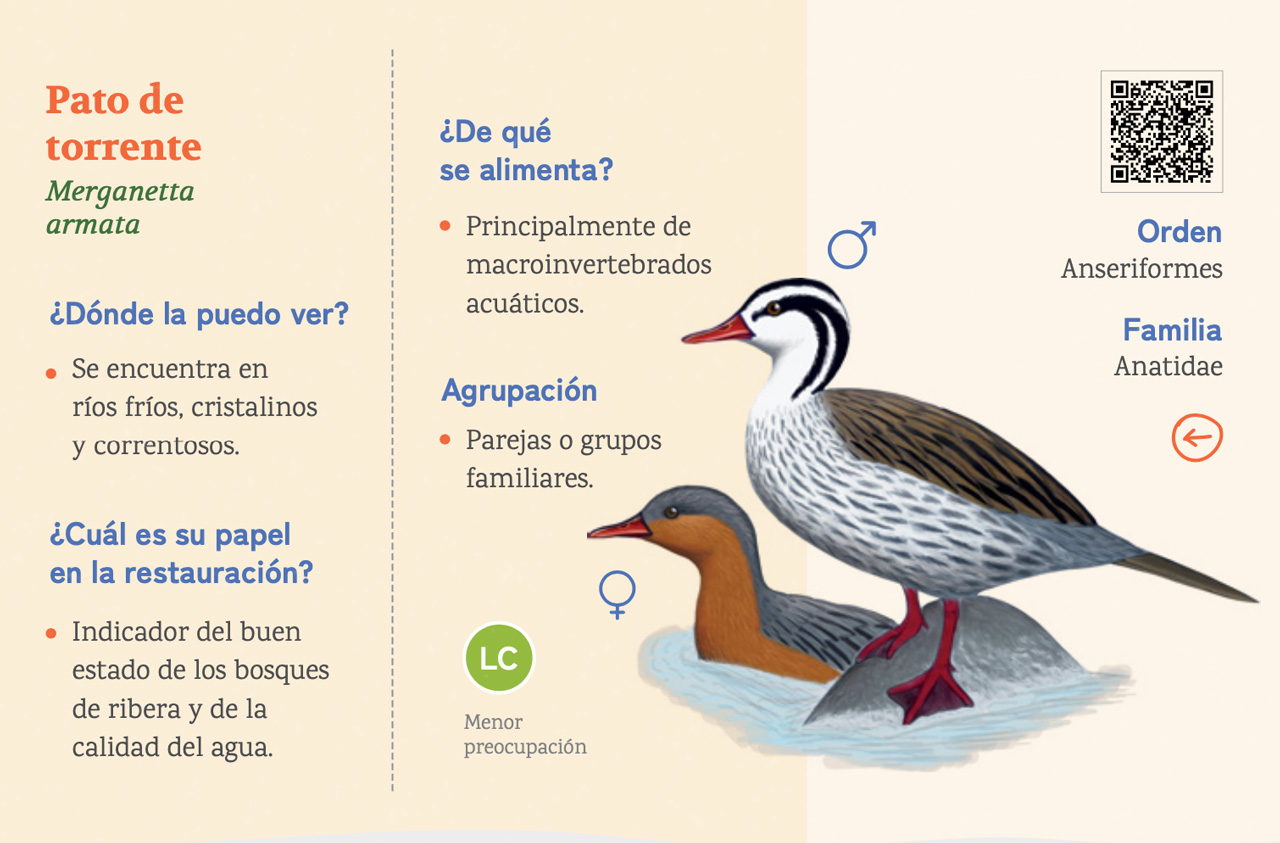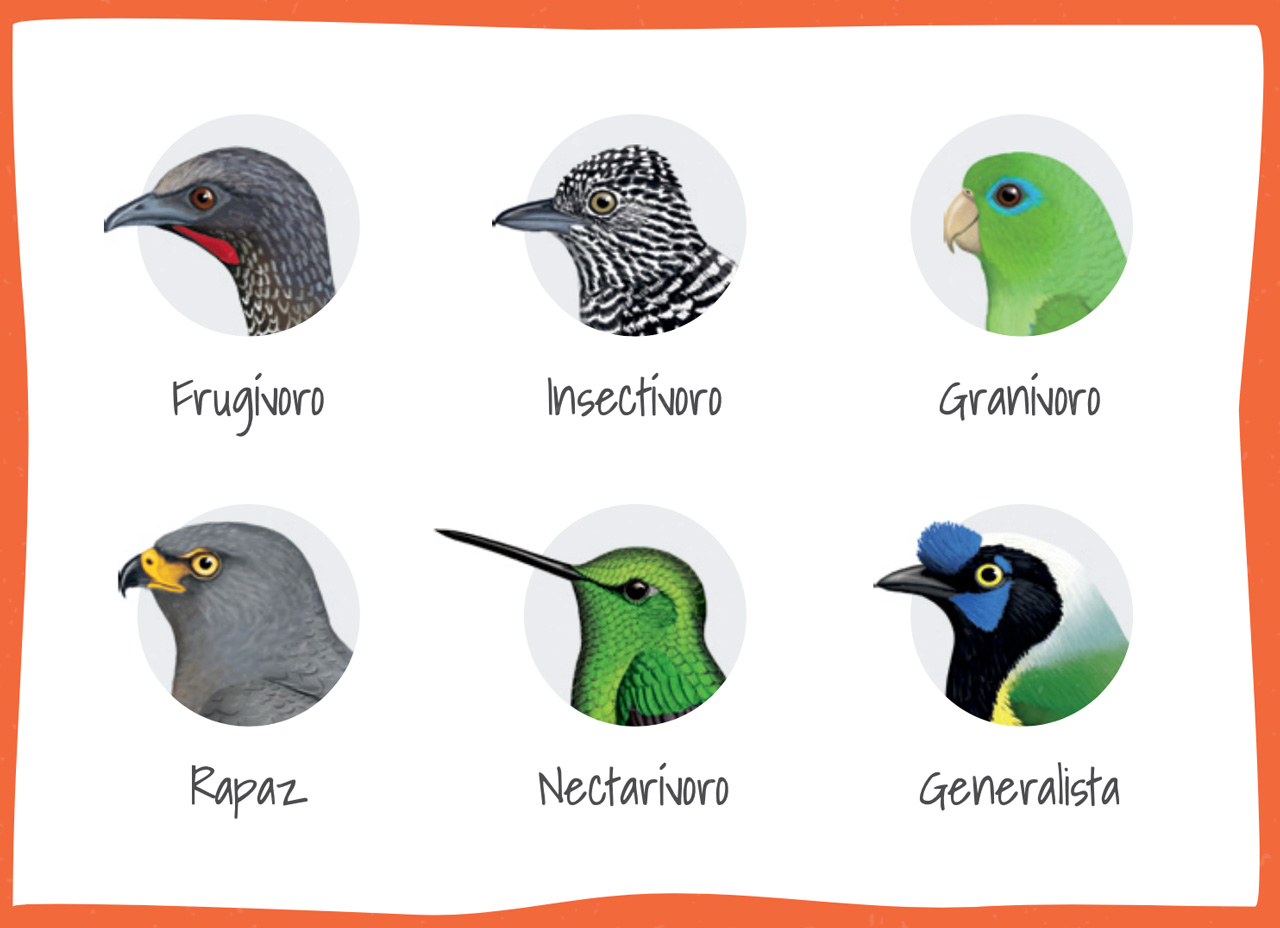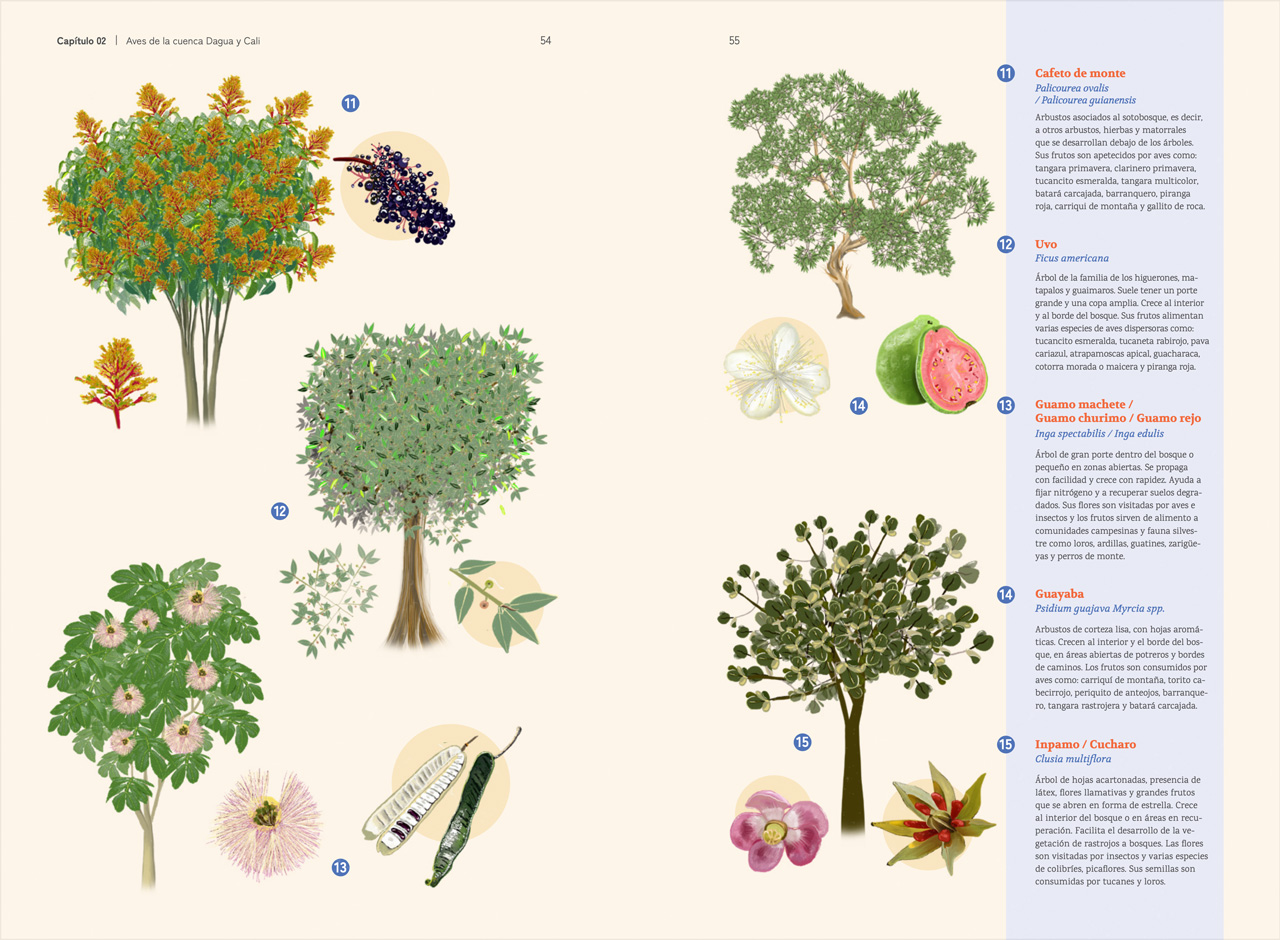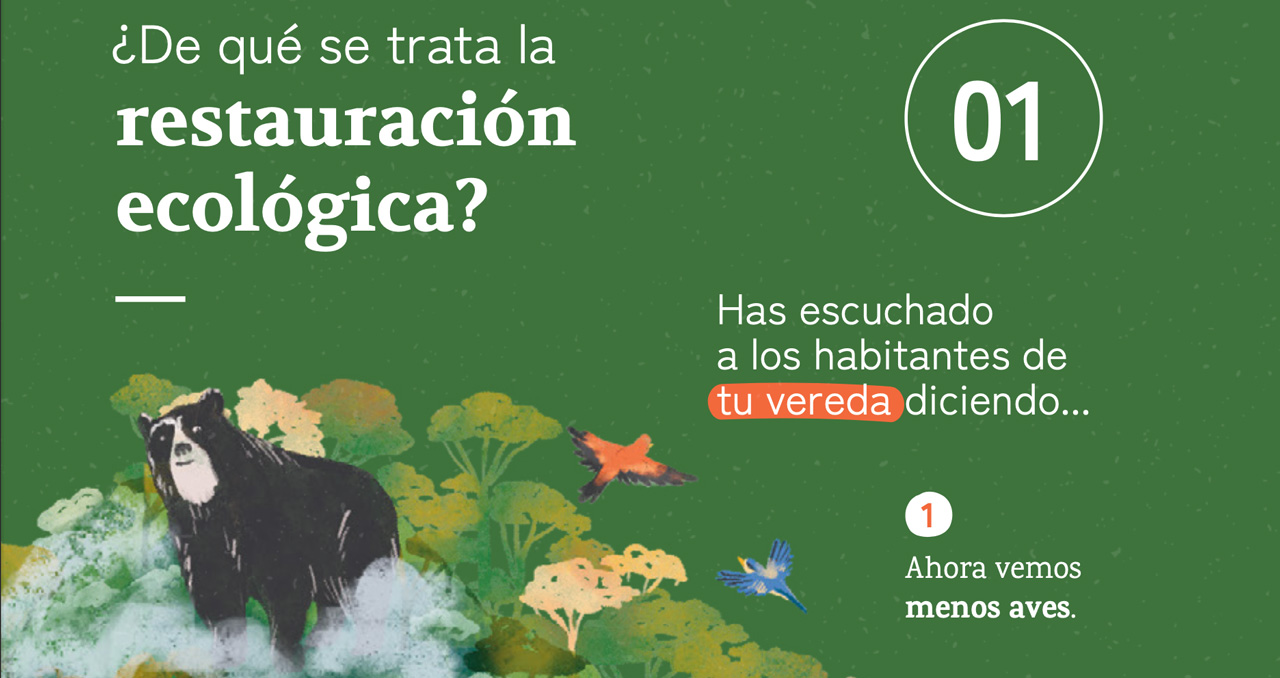 Who is it aimed at
Who is it aimed at
Birds and Ecological Restoration in the Dagua and Cali River Basins is mainly aimed at children and young people who, besides being interested in learning about these vertebrate animals, also want to become guardians of the forests where they live.
In addition, those who dare to enjoy this publication will not only learn through play; they will also have a beautiful document in their hands where they can record any bird sightings they make during field trips.
 What the cards contain
What the cards contain
The 44 cards included in this publication—each describing a different bird species—provide information, among other aspects, on the type of vegetation where they are commonly observed, the role they play in restoring their own habitats, and the kinds of food they consume.
The illustrations also highlight their color patterns, body shapes, and the differences between males and females. A QR code accompanying each card links to the eBird platform, providing access to photos, videos, and songs of each of the species featured in this useful publication.
 Beaks
Beaks
The reader will also find information related to the shape and size of bird beaks, depending on the type of food they consume. For example, some beaks are long and pointed, which helps them to extract nectar from flowers; others, such as those of raptors, are strong and sharp, allowing them to tear their prey apart. There are also beaks adapted for eating fruits, seeds, or insects.
To better understand this topic, the guide includes, at its end, some games that help the reader more illustratively grasp this close plant-animal relationship.
 Plants
Plants
Another section of this guide describes 15 plant species from Valle del Cauca that are considered highly important for birds and forest restoration. It is important to remember that many birds help disperse seeds and fruits, as well as transport pollen, thereby contributing to the regeneration of natural cover. Thus, the reader will learn, for example, about the growth rate of these plants, how they improve soil conditions, whether or not they fix nitrogen, and which groups of animals they feed (primates, birds, or bats, among many others).

Just as plants and birds are the heroes of restoration, children and young people, through their learning, can become the future restorers of forests. Restoration—let’s be clear—helps recover plants, soils, and the necessary harmony that must exist between people and nature. Additionally, restoration brings multiple benefits, which are represented, to name just one example, by the ecosystem services provided to us by natural environments. Therefore, restoration is the first step we must take to have healthier forests that, besides being home to thousands of wild species, also contribute to the health and well-being of all of us.
Download the guide here: https://tinyurl.com/3a4y574r
Traslated with AI support